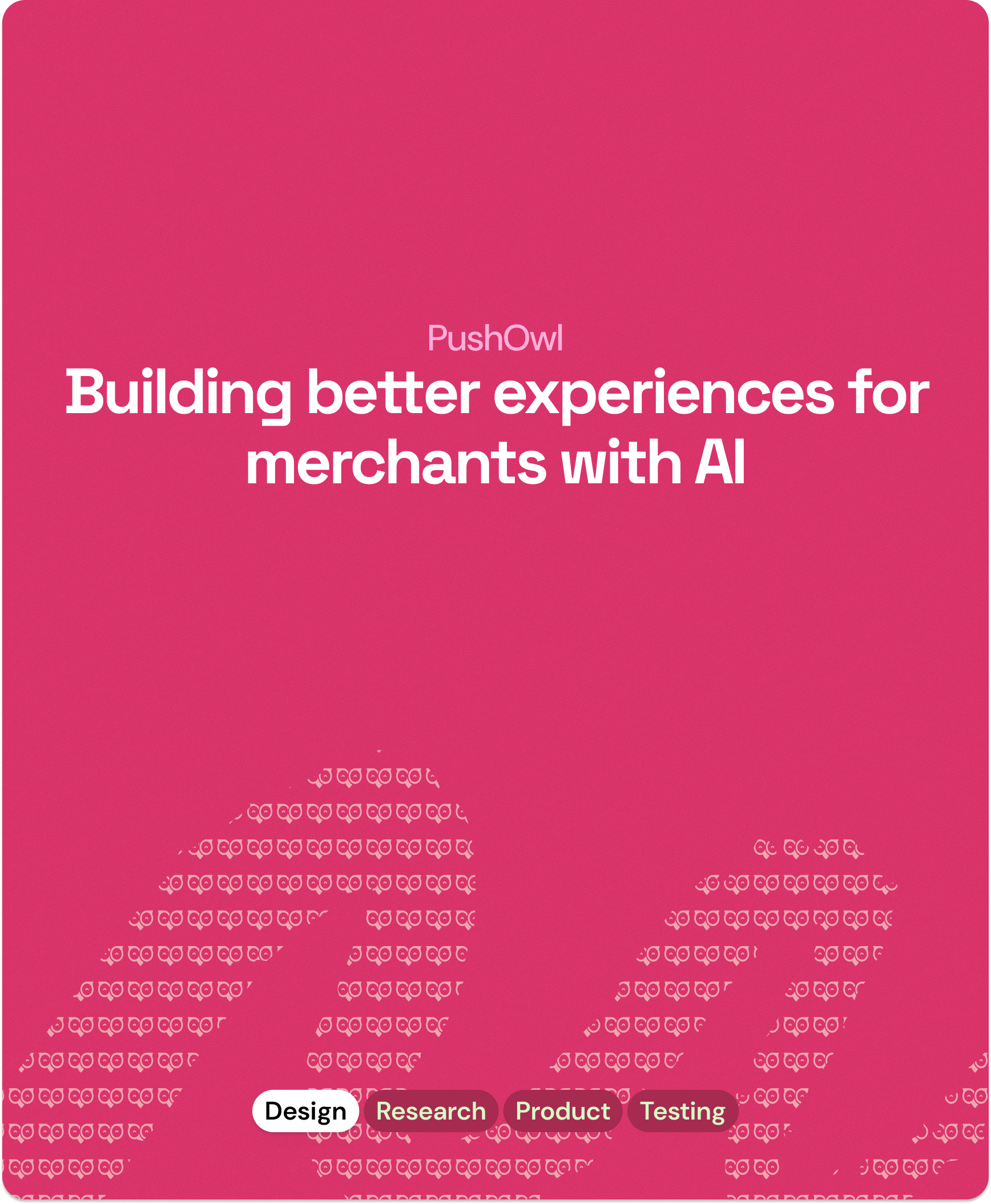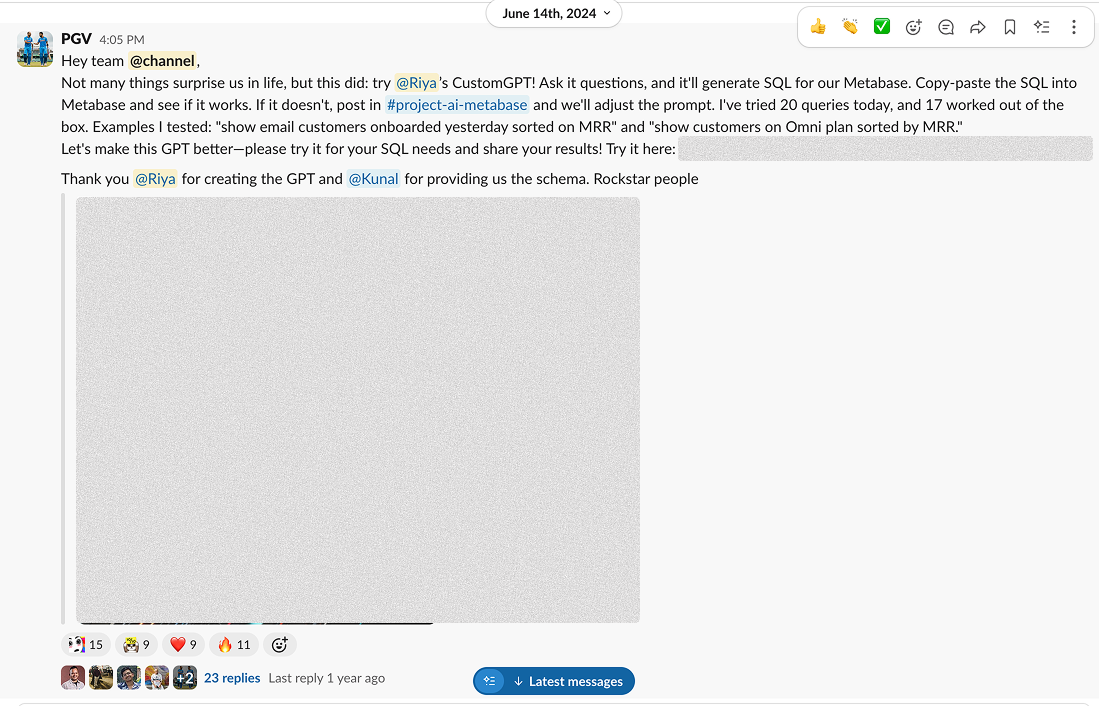+35%
Campaign rate
AI that writes your campaigns like you would-faster, transparent, and anchored in trust.
Campaign rate
Minutes saved
AI rails shipped

I shipped three AI rails—Query, Create, Target—so teams experience the finished SQL, copy, and segment before they ever touch the blank state.
North‑stars (ranges only): Time‑to‑first‑win ↓ sharply • Adoption moved up in target cohorts • Support questions down on the same paths • Trial → paid improved modestly where AI shipped outcomes early

Make company data self‑serve for PMs, design, and GTM teams without analyst bottlenecks.
Every data question required back-and-forth with analysts. Teams pasted broken SQL into Metabase. Iteration cycles took days instead of minutes.
Goal: help merchants create send‑ready HTML emails in minutes.
Most merchants stall at a blank canvas: writing copy, picking images, linking buttons, product picks, accessibility, responsive HTML.
Top‑funnel PQLs ↑ • Activation ↑ (first campaign faster) • Retention ↑ (quality + frequency of sends) • Upsell path into higher plans
Working prototype; pages & help docs drafted; success metrics defined.
Goal: suggest high‑leverage audience segments and forecast expected lift so merchants can send smarter campaigns.
Order status, coupon use, geo, traffic source, customer type, AOV tiers, product performance, behaviors (clicked, added‑to‑cart, revisits), recency & frequency.
avg_order_value × expected_transactions × segment_size × conversion_probability (Shown
with assumptions; never over‑claims.)
More data via Brevo e‑commerce; more mature practitioners; clearer ROI; fits our new launch.
Engineering bandwidth limited in Q2; revisit with design‑first spec in Q3. Wireframe: Whimsical. Colab: data generation & scoring scripts.
Goal: dynamic, personalized product blocks merchants can drop into emails/pages as a premium feature (separate from static HTML GPT outputs).
HTML GPT generates static send‑ready HTML. Recommendations need to be dynamic at open/time of render, so this is a separate module.
Less manual curation, more relevant cross‑sell/upsell, better CTR/AOV.
Noticeable lift in click‑through on rec blocks; AOV nudges where cross‑sells appear; higher reuse of dynamic block over static grids.
Service spec (API), caching strategy, guardrails for availability/out‑of‑stock, and controls in editor.
Aim: auto‑produce correctly cropped/resized creatives for Android/Desktop/iOS push so merchants don’t juggle three assets.
Users upload multiple variants or hand‑crop to fit standards; it’s slow and error‑prone.
Tried Cloudinary’s smart‑crop via API to prove value quickly:
https://res.cloudinary.com/demo/image/upload/g_auto,c_crop,w_200,h_200/sample.jpg
Feasible UX, but AI crop is paywalled and quality isn’t guaranteed for all product shots. After a day of POC attempts, I paused the project (cost/consistency trade‑off) and documented an alt path: simple ratio presets + safe focal‑point picker.
Time saved per campaign, reduction in asset errors, satisfaction on editor flow.
Goal: let merchants spin up branded, multi-channel opt-in moments (push, email, SMS) without engineering help.
Ran concierge onboarding for 12 stores, captured before/after metrics, then productized the editor once we had repeatable guardrails. Engineering later hardened the trigger/targeting logic using the same schema from AI Segments.
Primary: time‑to‑first‑win, adoption %, shipped outputs (queries run, emails sent, segments used), trial→paid delta.
Quality: refund questions, support tickets / 100 uses, error rate, unsubscribe/spam on first sends.
Cohorts: order bucket × UTM × offer type (self‑serve / managed) × surface (modal, topbar, feature).